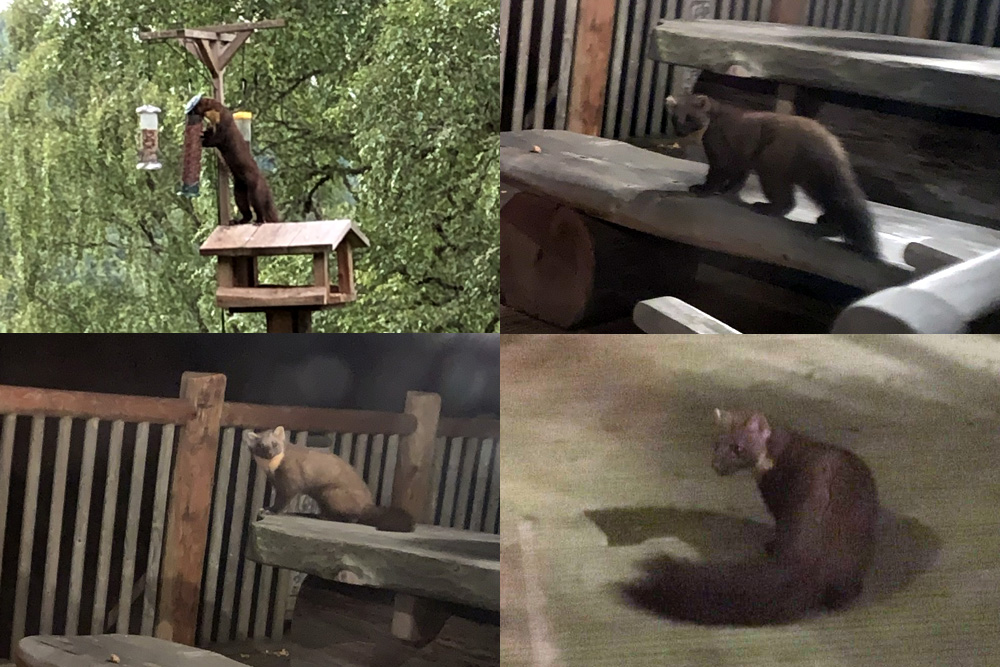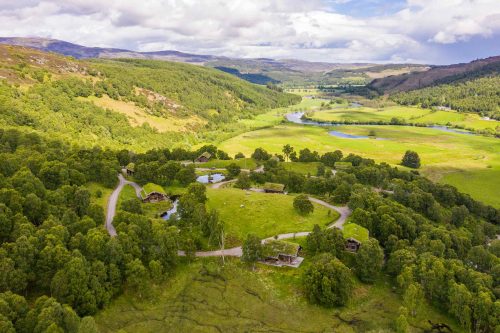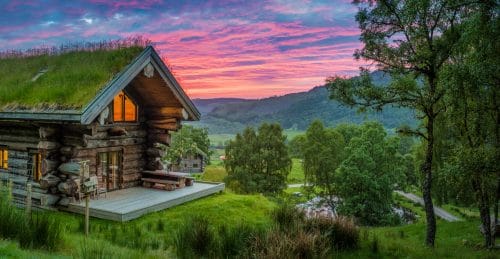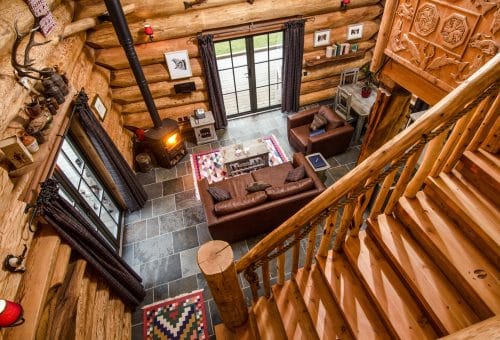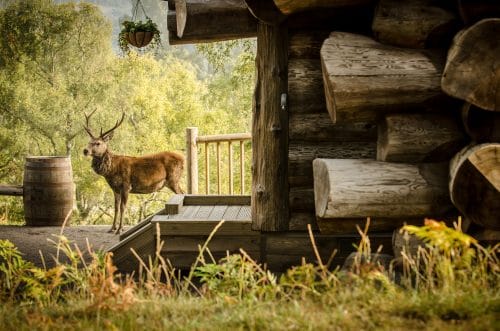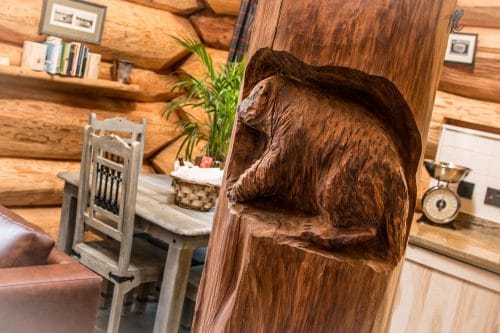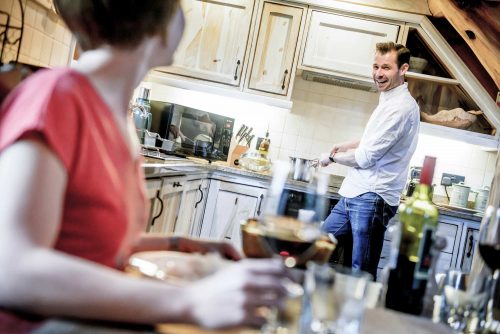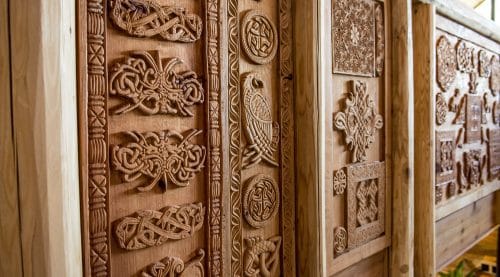5 facts about our friend the pine marten
The elusive pine marten is a very rare sight across the UK these days. However, we are lucky to have relatively strong numbers here in the Scottish Highlands. They’ve even been spotted outside our log cabins by patient guests on the look out after dark! The pine marten is always a welcome visitor and we’re thrilled by a sighting at Eagle Brae. So today, we’re sharing some fascinating pine marten facts about our small yet fierce woodland friend.
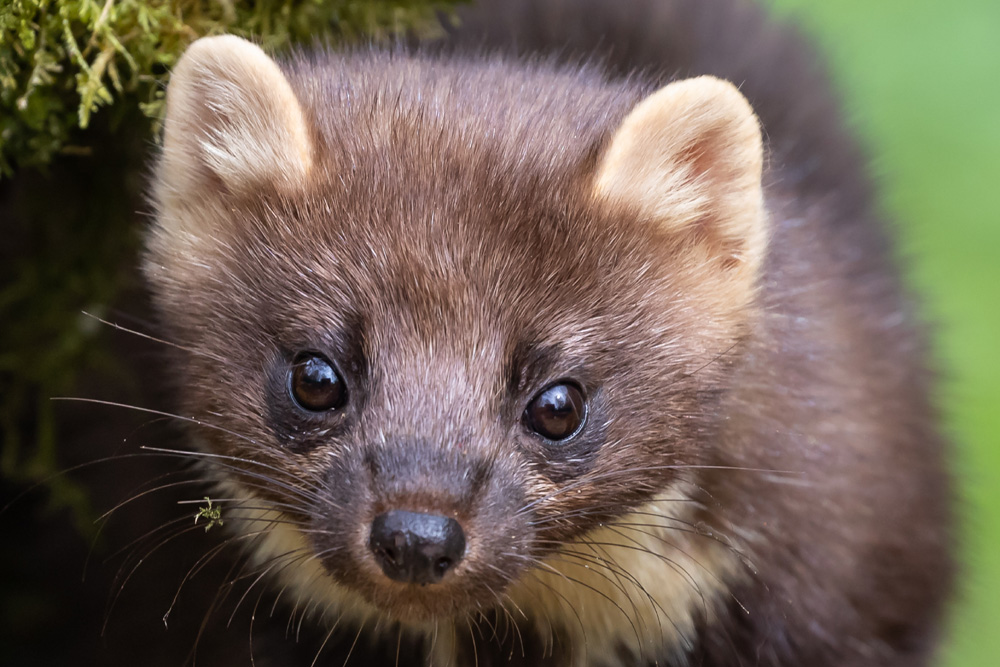
1. They’re related to the weasel
Native to Britain, the pine marten is a member of the mustelid family, related to weasels, otters, stoats and polecats. They look similar, with rounded ears, long furry bodies and bushy tails. However, they are larger – about the same size as a domestic cat.
2. Excellent climbers and jumpers
Pine martens are very good at climbing. They are quick and agile, with strong claws for grip and a bushy tail for balance. They jump along the ground and spring from tree-to-tree in pursuit of prey. Leaping up to 4 metres between branches. And they can jump to the ground safely from heights of up to 20 metres.
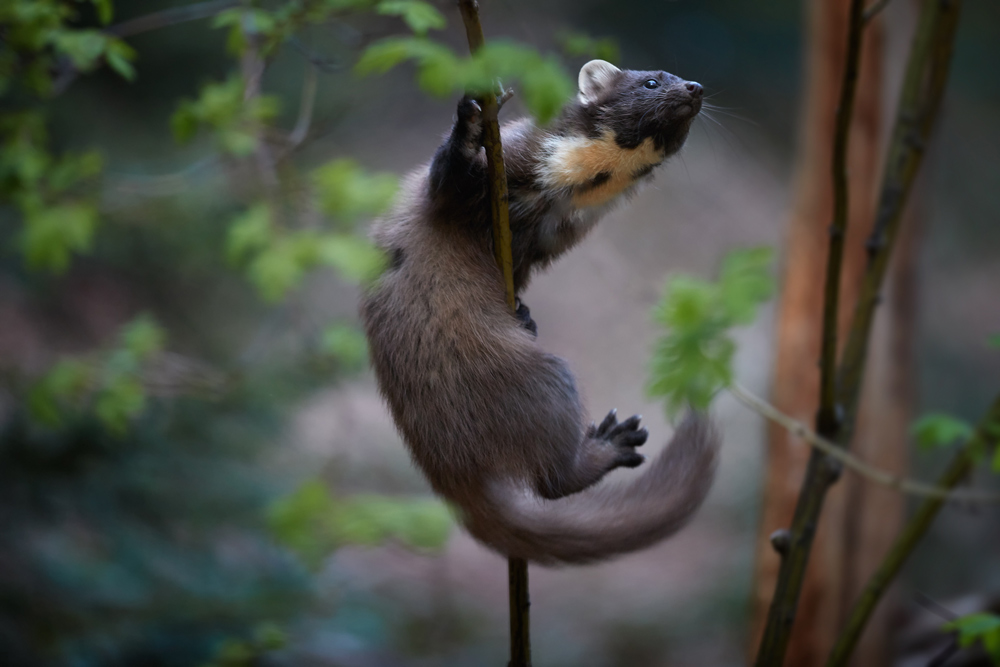
3. They are omnivorous
Sometimes described as carnivores, pine martens are actually omnivores. Which means they have a varied diet consisting of both meat and plants. They prey on insects, birds and small mammals like squirrels, voles, mice and rabbits. But they also eat fungi, fruits and berries.
4. Solitary and territorial
Pine martens prefer to live on their own in well-covered woodland habitats and they are very territorial, defending vast areas. Pairing up only during the summer to breed. They have up to 5 young (kits), which are born in the spring. The kits then leave their mothers in the autumn, after about six months, to go it alone.
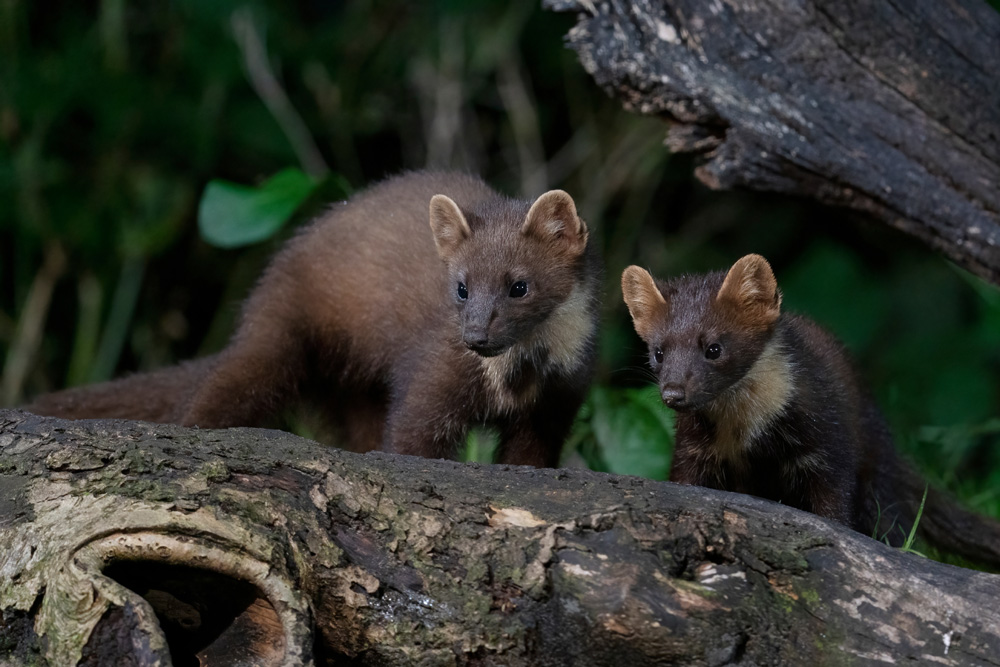
5. A protected species
Pine marten numbers declined dramatically since the 19th century, due to many factors mostly involving humans. Such as the loss of woodland habitat, predator culling, and hunting for the fur trade. But the good news is, in 1988 they became a protected species, making it illegal to remove, injure or kill them. And numbers here in the Scottish Highlands are now increasing as a result.
Pine Martens at Eagle Brae
So, be sure to keep an eye out for pine martens during your next stay at Eagle Brae. They are nocturnal, so you will usually need to wait until darkness falls, and be very patient if you wish to spot one. Below are some of our guests’ pictures. We’d love to see yours too, so please do share any sightings with us on Facebook, Twitter or Instagram.
